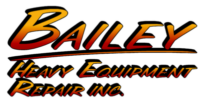The Different Types of Machine Shop Welding
Welding is an essential part of many fabrication processes. There is more than one type of machine shop welding, and knowing what the different types are might help you determine what is going to work for you. There are three types of machine shop welding, and we want to help you understand what they are.
Types of Machine Welding
There are three types of welding machines that are used to weld metal. The first is a spot welder. This is just what it sounds like, it is a welder that is going to be used for smaller jobs and be portable as well. This type of welder uses two copper electrodes that are going to pinch down on sheets of metal, where electricity is then going to flow through. The friction helps to heat up the metal and then helps to make the solder liquid so that it can fuse the metal together.
There are also brazing or MIG welders. These are welders that are going to be a bit bigger and that are often used to form joints or to make larger welds. They work by clamping the electrode to the metal that you are working on, and then the machine will feed the wire through the welding gun to be melted. The wire is what helps to weld the two pieces of metal together.
The last type of welder is a stud welder. This is a welder that is going to fuse a stud to a piece of metal. The electricity flows through the stud and the metal and then fixes the stud to the metal in question.
Types of Plasma Welding
There are also a few types of plasma welding that you might come across. The first is microplasma welding. This is very small welding that uses a current between 0.02 and 15 amperes of electrical current. There is also normal plasma welding which is also called the melt-in technique. The last type is what is called a keyhole technique. Keyhole welding is going to be much hotter than any of the other types of plasma welding.
There are tons of different welding machines and types of welders that can be used to help weld two pieces of metal to one another. These are going to make the pieces permanently joined and to ensure that they do not move unless they are manually taken apart.
